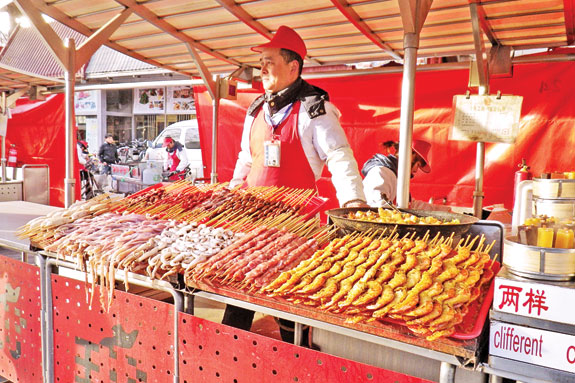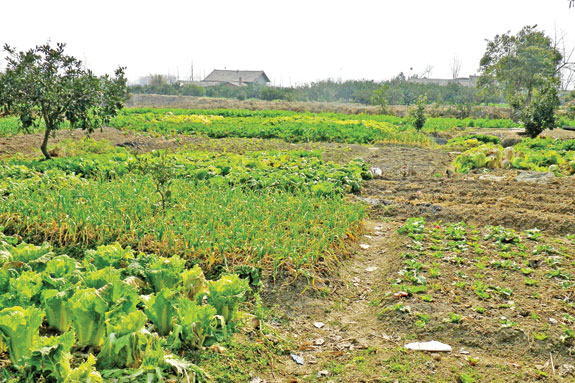The country’s beef exports have picked up steam as well this decade, with beef product exporting to Russia, the Middle East, South America and South Korea.
You can’t talk global agriculture without talking about China, though. The country is positioned to have one of the greatest impacts on American agriculture in the coming years. And why is that?
China’s population is plateauing, hovering just under 1.4 billion people and its gross domestic output has begun to taper off. Having been rampantly increasing at 10 percent every year for several years on end, the government now says it will see moderate GDP gains of 5 to 7 percent in the coming years.

The people of China are flocking to the city centers as well, leaving the countryside for the amenities and work opportunities of city life. The result is fewer farmers to produce the nation’s food.
And much of China’s agriculture industry is antiquated and ill-performing. They are producing but often the quality – especially with regards to food safety – is inferior to U.S. products.
The country realizes the quality found in American- farmed crops and they readily import soybeans, corn, alfalfa and distillers grains to support their own livestock sector. In 2011, China spent $20 million on U.S. imports.
It is no doubt that China will continue to compete for a significant share of feedstocks produced by U.S. farmers in coming years, as it does not have the manpower, arable land or the infrastructure in place to produce on their own.
The imported soybeans are also used to make soybean cooking oil and soy sauce for human consumption, while domestically harvested varieties are used food-grade beans mainly suited for tofu manufacturing.

The Chinese diet is made up of three staples: pork, rice and cooking oil. However, even with a possible Chinese economy meltdown, the average wage in China is increasing.
This uptick in money has affected the population’s ability to spend on luxury items – including food – that may show a change-up to the country’s diet in coming years.
As a country develops economically, the first quality-of-life aspect that improves at the household level is the carbohydrate-to-protein ratio in the daily diet.
Greater economic prosperity amongst consumers in mainland China has directly translated into higher shares of animal protein such as pork. An increase in pork consumption creates opportunities for U.S. pork farmers, as the unit price increases fueled by consumer demand.
Higher pork prices are an incentive to increase production; however, increased profitability will mainly be dominated by large-scale integrated farms that can benefit from standardized production and economies of scale.
U.S. beef in China
Beef has never been a mainstay of the Chinese meal routine, as meat is generally only eaten two to three times a week and generally it is in the form of pork or poultry. What market there has been for beef has been supplied domestically or by Australia, Uruguay or New Zealand.
There are a variety of reasons why China has refused to lift its ban on U.S. beef imports. One stems from the 2003 case of BSE in the U.S. cattle industry when China declared U.S. beef unsafe.
According to Joe Schuele of the U.S. Meat Export Federation, the agency has begun to see an increase in interest for U.S. beef in China from consumers, importers, retailers and restaurateurs.
“While China’s ban on U.S. beef dates back to the 2003 BSE case, the safety of U.S. beef does not appear to be a concern among consumers,” says Schuele.
A second “nail in the coffin” might have come from a Bush administration misstep, according to Jorge Sanchez, agriculture consul of the U.S. Consulate in Guangzhou, China.
“When China was ready to make a beef deal with the U.S., the Office of the United States Trade Representative held off because they were waiting to see what South Korea would allow for beef pending free trade agreement negotiations,” says Sanchez. “That was a mistake, as the Chinese were deeply offended and they could have been a bigger market than South Korea.”
Sanchez says it will take a major political chip to get China to open up its borders to U.S. beef. What that political accession or compromise might be he is unsure, and when an opportunity might arise is even more unclear.

If China were to allow U.S. beef, the USMEF estimates it would generate $320 million in U.S. exports the first year. “However, we cannot predict when the market will open,” says Schuele.
Australia has managed to enter China’s food sector, providing half of the beef China imported last year, a value of $59 million.
Sanchez says Australia’s model for success in China is something that could be and should be followed.
“The Australians have a very legal and organized trade with national distributors. They did it right and routinely hold promotions and trade servicing seminars. They have a proven model of success,” says Sanchez.
Also competing for market placement in China is Uruguay, which shipped beef valuing $33.6 million last year. New Zealand shipped $11 million and Brazil $8 million.
“In our opinion, however, U.S. grain-fed beef could grow demand in this market significantly,” says Schuele. “In other words, there is plenty of room for U.S. beef in China without necessarily displacing existing suppliers.”
Sanchez agrees, likening U.S. beef to French wine. “When people in China think of quality wine they think of France. When people think of the best beef they think of the U.S.,” says Sanchez. “However, the people of China aren’t upset enough about the lack of U.S. beef to make any demands.”
It seems China’s impact on American agriculture may not come in the form of large requests for beef anytime soon. However, similar to its global quest to secure natural and energy resources, we can expect to see China continuing to position for shares of the grain and livestock feed sector’s output. ![]()
Writer Codi Vallery-Mills traveled to China this past February on an agriculture study tour with the South Dakota Agriculture and Rural Leadership program. While there, she received a first-hand look at the farming industry of China and witnessed the population and infrastructure issues the country continues to deal with.
PHOTOS
TOP: A Buddhist temple in China.
MIDDLE: Pork and poultry are the main meat sources for the Chinese, along with a few other exotic choices that can be found at the Friday Night Market in downtown Beijing. Silkworms, scorpions, ox tail, and organ meat from sheep can readily be found.
BOTTOM: The average farm size in China is one-half acre. This farm outside of the small village of Anfusi, China was growing rice, canola, cabbage and onions. Photos courtesy of Codi Vallery-Mills.






